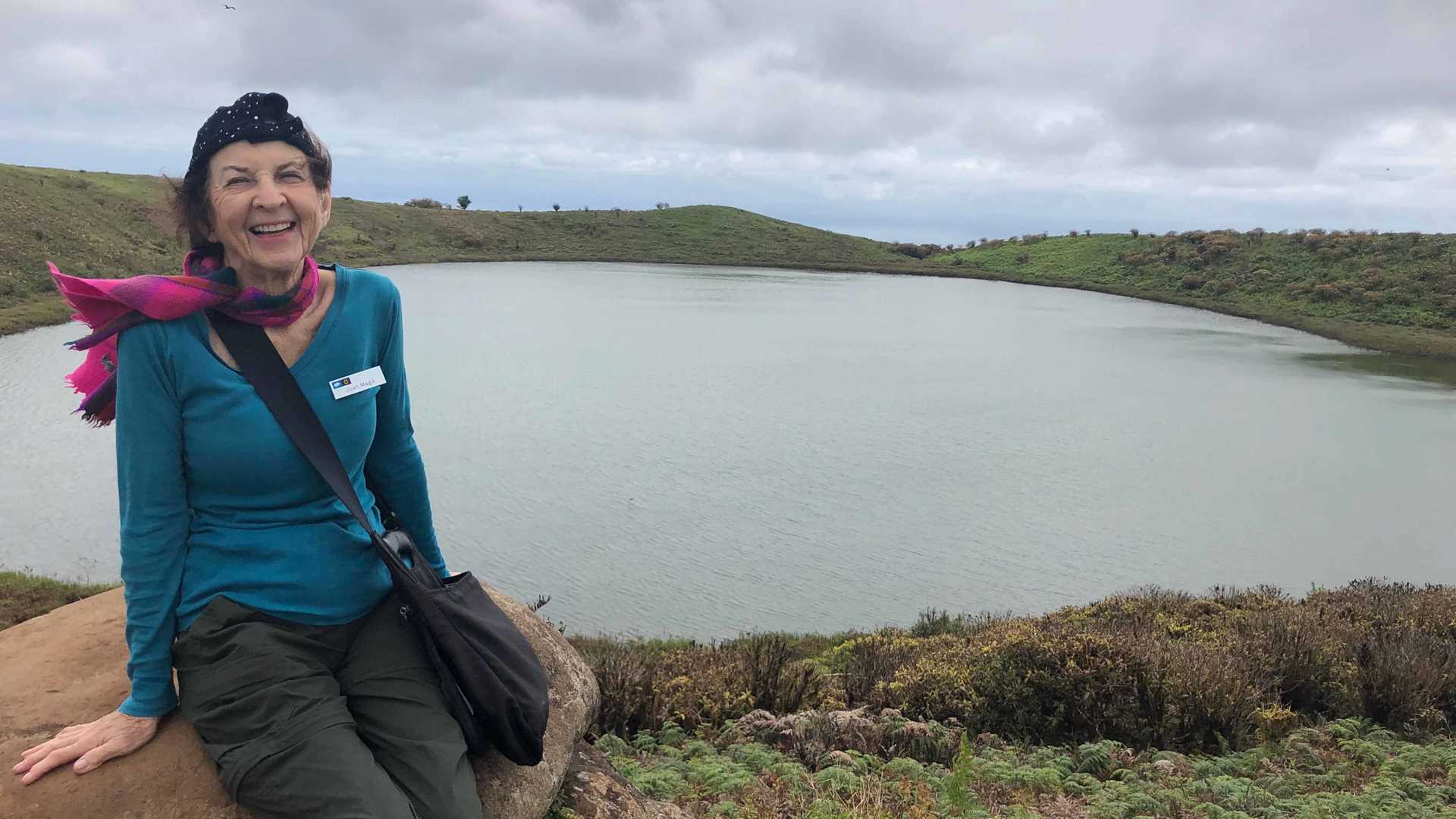Today National Geographic Islander is anchored on Wreck Bay, located just in front of the capital of the Galapagos Islands, Puerto Baquerizo Moreno. Our guests had the opportunity to start the day with a very active Zodiac ride along the town coast. Then, logistics were prepared to head to the highlands where we visited el Junco, a freshwater lagoon at 760m from sea level. Here some frigate birds were having a fun time washing their plumage in the lagoon. Afterword we arrived at Otoi, a restaurant where we had lunch ready for us. We then headed to the Galapaguera and saw newborn tortoises that will be released into the wild at five years old.
- Daily Expedition Reports
- 02 Dec 2018
Puerto Baquerizo Moreno, El Junco, 12/2/2018, National Geographic Islander
- Aboard the National Geographic Islander
- Galápagos
Ixora Berdonces, Naturalist
Ixora was born in the Galapagos Islands, back when the streets were made of sand and gravel. Void of TV and tablets, her childhood friends and pristine natural surroundings made for an inspiring upbringing. She was always drawn to the ocean and her l...
Read MoreShare Report
Related Reports
11/23/2022
Read
National Geographic Islander II
Isabela and Fernandina
Our day began with the chance to point out a lot of interesting geological features as we enjoyed Zodiac tours along a massive flank of Ecuador Volcano on Punta Vicente Roca. In the afternoon, we took a sunny walk on Punta Espinoza on Fernandina Island. We spotted many iguanas, and a bunch of sea lions hanging around, too.
11/22/2022
Read
National Geographic Islander II
North Seymour & Rabida Islands
Relatively small and low compared to neighboring Santa Cruz, North Seymour is located to the north of Baltra. The island is dry with predominantly low shrubs, like prickly pear cacti. The incense trees are bare during the dry season. Seabirds like frigatebirds and blue-footed boobies nest on the island, and sea lions rest on the sand when they are not fishing. Land and marine iguanas also live here. Rabida is in the middle of the archipelago and has a striking red sand beach. We observed a small colony of sea lions of all ages resting or nursing. Behind the beach, American flamingos nest in a brackish lagoon. This island is full of contrasts and wildlife that we enjoyed observing during this day of expedition.







